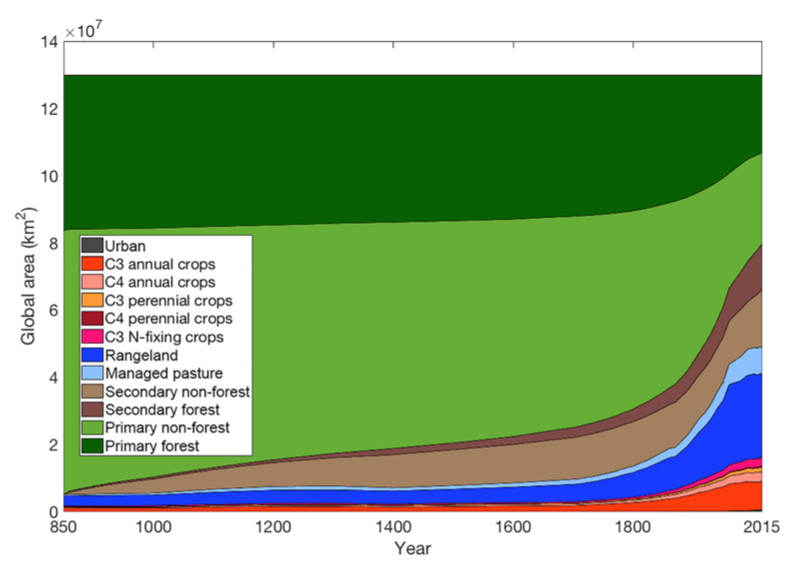In a new paper published in the journal Geoscientific Model Development, a team of researchers including UMD Department of Geographical Sciences researchers George Hurtt and Louise Chini describe the motivation and the experimental design for a new set of modeling studies of global climate change over the past 1000 years. The study includes important new approaches to external forcings of the climate system, including land-use change, that provide a seamless transition across these time periods.
The abstract for this paper is provided below:
The pre-industrial millennium is among the periods selected by the Paleoclimate Model Intercomparison Project (PMIP) for experiments contributing to the sixth phase of the Coupled Model Intercomparison Project (CMIP6) and the fourth phase of the PMIP (PMIP4). The past1000 transient simulations serve to investigate the response to (mainly) natural forcing under background conditions not too different from today, and to discriminate between forced and internally generated variability on interannual to centennial timescales. This paper describes the motivation and the experimental set-ups for the PMIP4-CMIP6 past1000 simulations, and discusses the forcing agents orbital, solar, volcanic, and land use/land cover changes, and variations in greenhouse gas concentrations. The past1000 simulations covering the pre-industrial millennium from 850 Common Era (CE) to 1849 CE have to be complemented by historical simulations (1850 to 2014 CE) following the CMIP6 protocol. The external forcings for the past1000 experiments have been adapted to provide a seamless transition across these time periods. Protocols for the past1000 simulations have been divided into three tiers. A default forcing data set has been defined for the Tier 1 (the CMIP6 past1000) experiment. However, the PMIP community has maintained the flexibility to conduct coordinated sensitivity experiments to explore uncertainty in forcing reconstructions as well as parameter uncertainty in dedicated Tier 2 simulations. Additional experiments (Tier 3) are defined to foster collaborative model experiments focusing on the early instrumental period and to extend the temporal range and the scope of the simulations. This paper outlines current and future research foci and common analyses for collaborative work between the PMIP and the observational communities (reconstructions, instrumental data).


